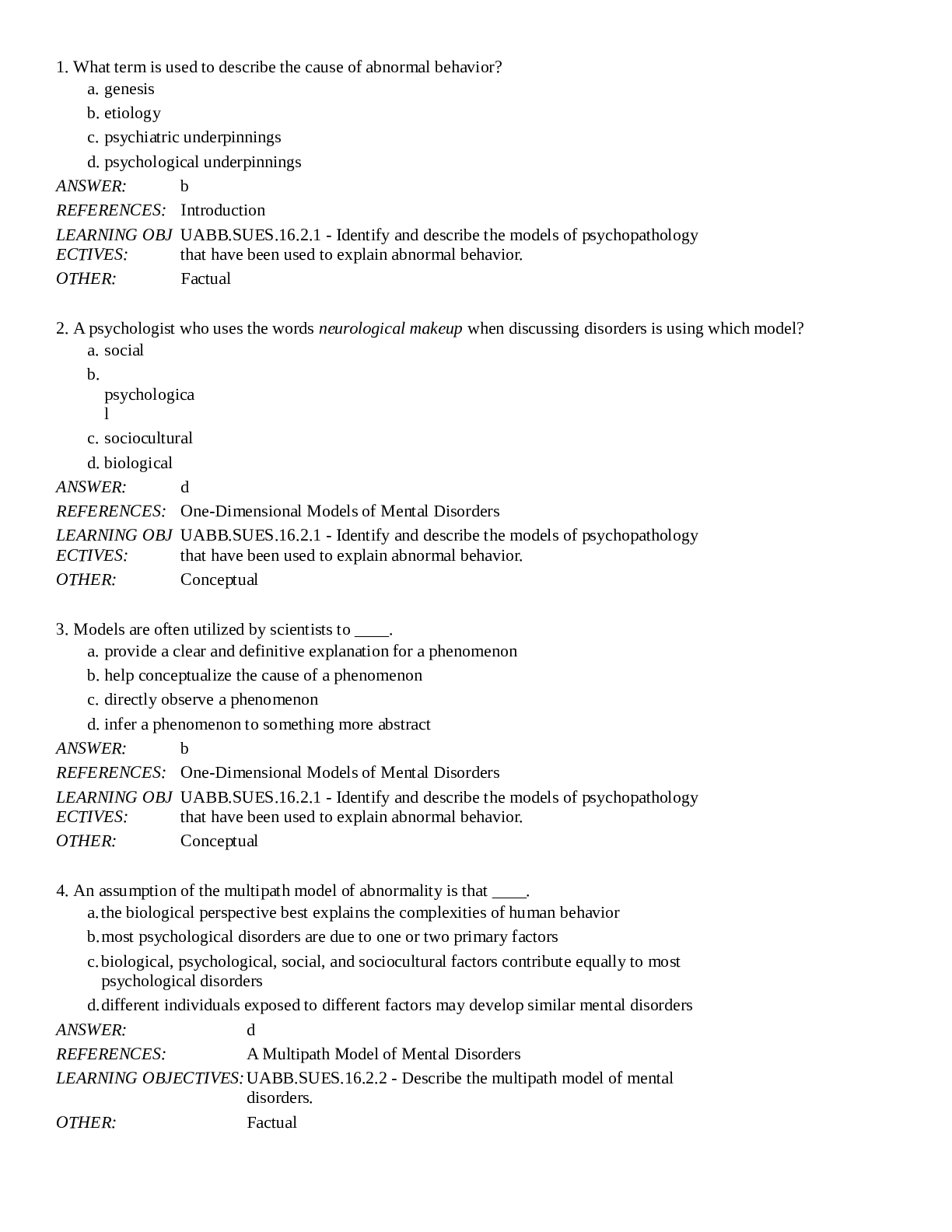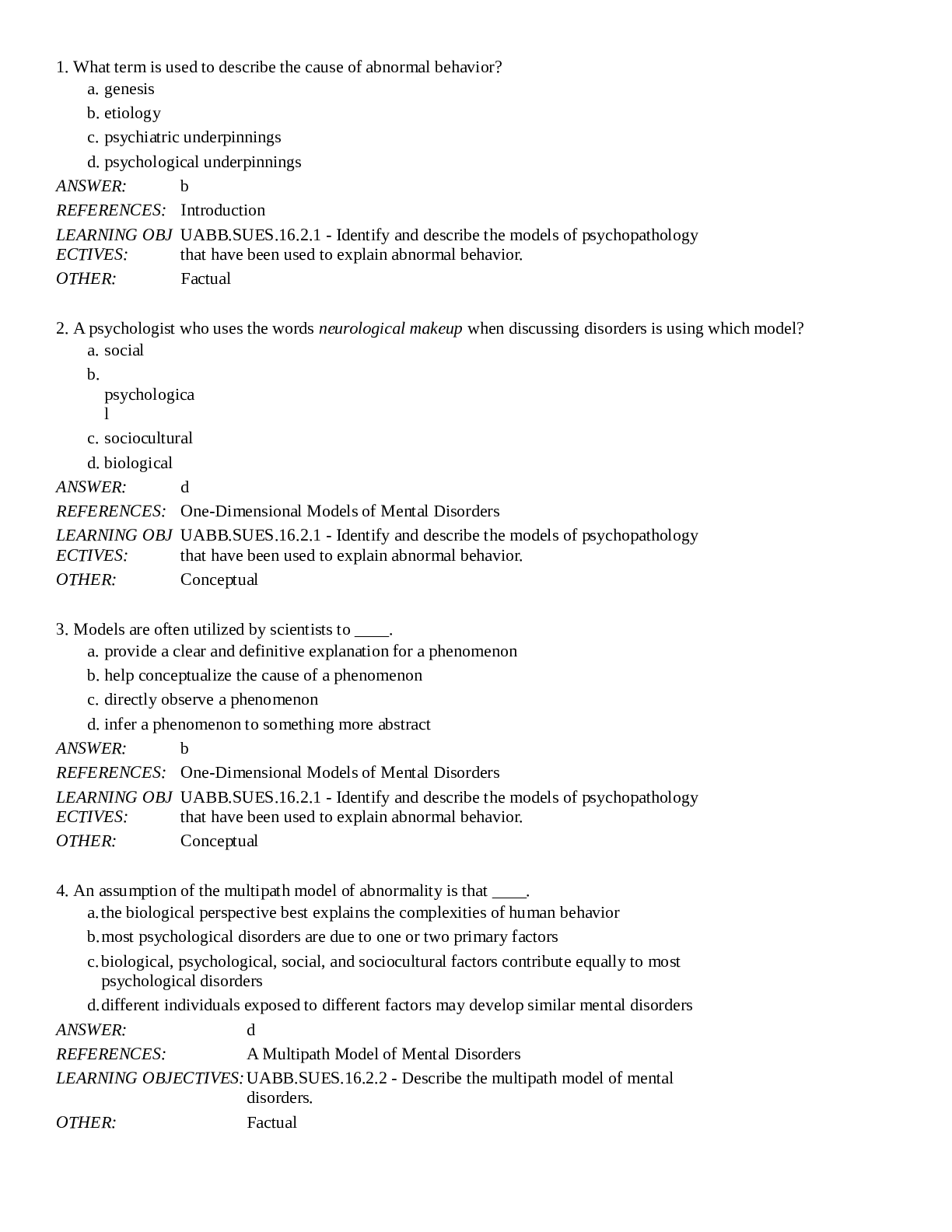Models of Abnormal Behavior
Course
Subject
Chemistry
Category
Questions and Answers
Pages
28
Uploaded By
ATIPROS
Preview 5 out of 28 Pages


Download all 28 pages for $ 11.50
Reviews (0)
$11.50
